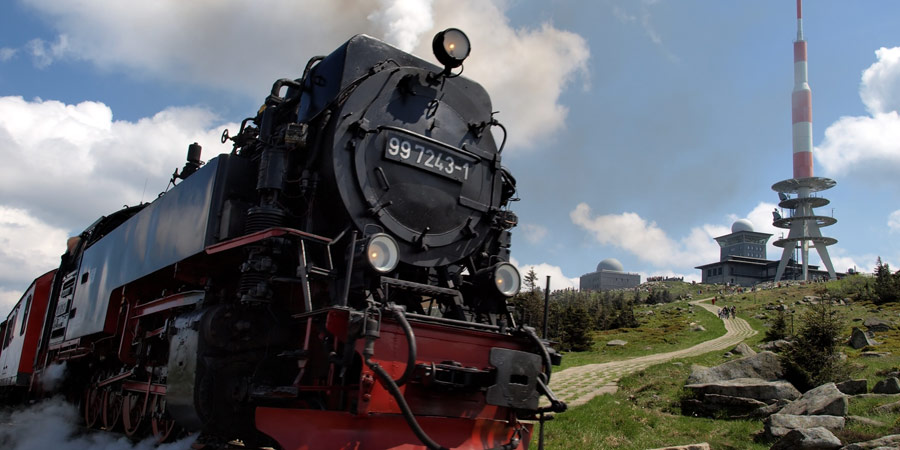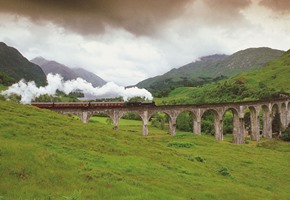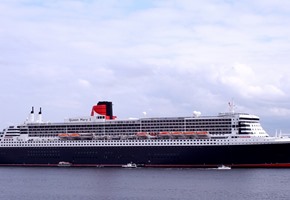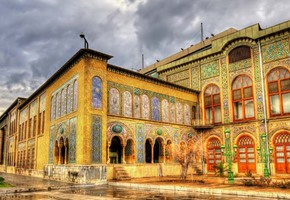Mention travelling in Germany and most people will think about tearing along the autobahns. But for the discerning traveller who wishes to see the best of this diverse and beautiful country - and to do so in a relaxed and comfortable manner - there is no better way than by train.
The German rail system has long been noted for its efficiency and a great deal of investment has been made into it. The pride of the system is the ICE trains which made their debut in 1991. These operate between several major cities including international destinations in Switzerland, Austria, Belgium, and the Netherlands. The comfort and convenience of the ICE trains is remarkable and they are fully air-conditioned and have an impressively low noise level.
As well as the impressive, modern ICE, Germany also offers a wide variety of historic railways:
Brocken Railway
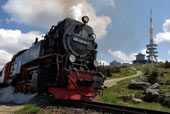
In the depth of the Harz Mountains, a popular tourist region of half-timbered villages, stunning peaks, undulating forests and crystal clear lakes, runs the narrow-gauge, steam-hauled Brocken Railway. The terrain here is ideally suited to a narrow-gauge railway and the winding track connects the small towns and villages of the Harz region, and is used by commuters, shoppers and school children as well as by tourists. Here the inclines are steep and the powerful engine strains to tackle the gradient on the way to Brocken, the highest mountain in the Harz region at over 3,700 feet (1,128 metres). As might be imagined, the scenery and the views are incomparable.
Selketal Railway
Still in the Harz Mountains, at Quedlingburg, a gorgeous town with a delightful Romanesque church and well-preserved red-roofed houses, where the 10th century stronghold of Burgberg looms imposingly over the town, is another narrow-gauge railway - the Selketal Railway - that runs through the Selke Valley. This steam and diesel service winds through some of the Harz Mountains' finest scenery.
Drachenfels Cog Railway
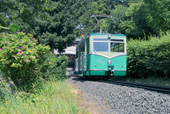
It isn't just mountainous areas that are served by wonderful and historic railways. Along the Rhine there are several that are justifiably popular with holidaymakers as they offer a unique and leisurely way of seeing the winding rivers and fairytale castles that prevail here.
The Drachenfels Cog Railway starts near the delightful town of Königswinter and leads from the bottom of the valley, up steep inclines and a height difference of 722 feet (220 metres), to the Drachenfels (Dragon Rock) hill. At the top, an imposing ruined castle of the same name overlooks the town and river.
Vulkan Express
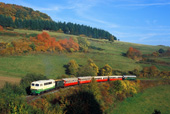
From Brohl runs the Vulkan Express, although 'express' may be a misnomer as the 11 mile (18 kilometre) journey up through the Eifel range to Engeln takes one and a half hours and locomotives reach the heady speed of 12 miles an hour. What it lacks in speed, it more than makes up for in scenic splendour, passing by fascinating slate and volcanic tuff rock formations and then across the Brohl valley via a viaduct 120 metres long and 12 metres high.
Kasbachtal Railway
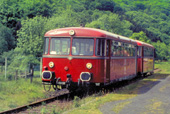
The steepest railway incline in Germany is on the Kasbachtal Railway as it runs from Linz-am-Rhein to Kalenborn. This standard-gauge railway is hauled by a 1950s Uerdinger Railbus engine along a 5.5 mile (8.9 kilometre) section of track that has an overall height difference of 984 feet (300m). It runs through a wonderfully wild landscape, climbing through rugged hills that offer a magnificent view of the Rhine, then passes ancient castle ruins and scattered villages before heading into a densely-covered region of woodland.
Schwarzwaldbahn
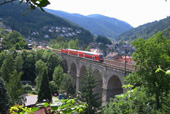
For an almost fairytale experience, just imagine a lake in the heart of the Black Forest. Here cuckoo clocks are made and, nearby, a stunning waterfall - one of the highest in Germany - plunges over 500 feet in a series of frothing cascades.
This is Triberg and it is here that you can board the Schwarzwaldbahn, or Black Forest Railway, which runs between Offenburg and Singen. The line was constructed over this challenging terrain between 1863 and 1873 and, even today, it is hailed as a supreme feat of engineering. In places a height difference of 650 metres had to be overcome and this was managed by creating a series of loops, tunnels and viaducts. Travel on it and you cannot be help but be impressed.
Still in the Black Forest region, those with a hankering for steam travel will love the Sauschwänzlebahn Steam Railway, known as the 'pigtail line' and one of the most unusual and impressive stretches of railway in Germany, which twists and winds through some of the Black Forest's most spectacular scenery to Weizen, near the Swiss border.
Wherever you may wish to travel in Germany, from remote countryside to bustling city, the train offers the perfect way to do it - and Great Rail Journeys have the tours to take you where you want to go.

